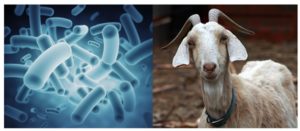The term genetically modified organism (GMO) is best known to the public from the food industry. The debate of those who support or are against GMOs in agriculture still remains to be resolved. However, the use of GMOs is more prevalent than people think! The principle behind GMOs used in agriculture is the same as the one used to make vaccines and medicine, such as insulin. In general, GMO refers to an organism whose gene (DNA) has been modified in some way. The organism itself can range from bacteria to plant to animals.
Prior to the discovery of insulin in 1921, people with diabetes led a short life and were often subjected to a very strict diet with minimal carbohydrate intake. Insulin treatment helps to regulate blood glucose that spikes following carbohydrate intake. Regulation of blood glucose level is important as glucose build-up can eventually lead to organ damage. The first insulin treatment, received by Leonard Thompson, was extracted from a cattle’s pancreas. Following its success, more insulin was purified from the pancreas of cows and pigs. However, a new technology had to be established to meet the increasing demand for insulin.
GMO insulin is closer to human insulin and is a safe and effective alternative to animal-derived insulin. GMO insulin was the first GMO or recombinant pharmaceutical to be approved by the Food and Drug Administration in 1982. In the case of insulin, the organism that is modified is bacteria. The gene for human insulin is inserted into the bacteria, allowing the bacteria to produce insulin that is marketed as Humulin. Because bacteria can multiply at a much faster rate than animals, producing insulin this way is much more efficient than relying on insulin isolation from a cow or a pig. Moreover, some people are allergic to animal-derived insulin; thus, Humulin is a great alternative since it is closer to human insulin.
ATryn is another recombinant pharmaceutical that is made using genetically engineered goats. ATryn is used to prevent blood clots in patients who don’t have enough antithrombin – a protein that helps to prevent blood clots. ATryn is produced by inserting the human antithrombin gene into a goat, and the antithrombin is then purified from the goat’s milk. Prior to ATryn, patients relied on human blood donors. Similar to the case of insulin, relying on goats rather than human donation allows antithrombin to be manufactured at a larger scale and is a more cost-effective method. Moreover, the use of GMO goats also decreases the risk of transmittable diseases from human donors.
While uncertainty regarding the side effects of GMOs in food products is still debatable, the idea of the GMO itself is not necessarily new or bad. These two examples, among many others, show how GMOs can be beneficial for the treatment of diseases and biomedical research.
Peer edited by Isabel Newsome
